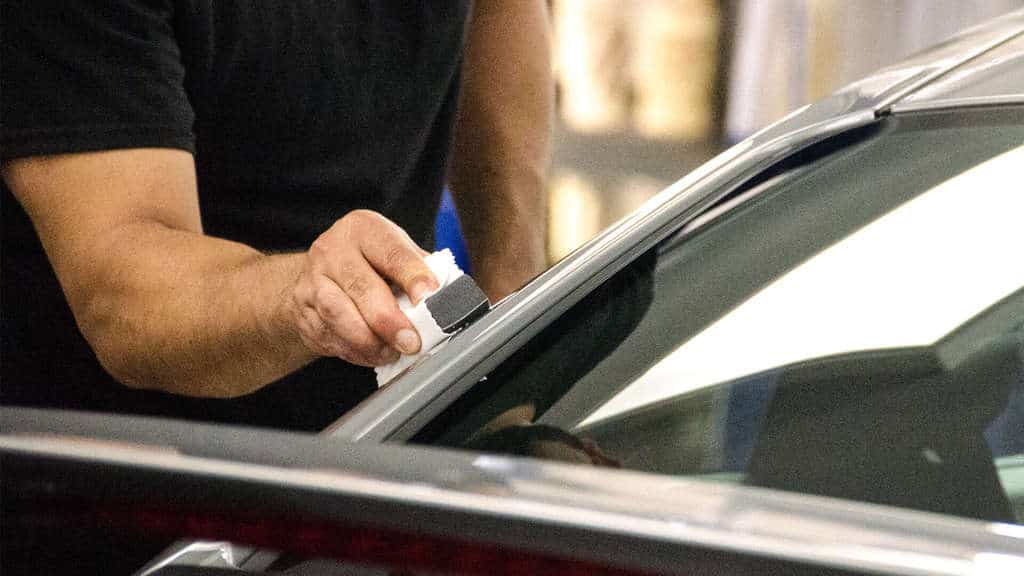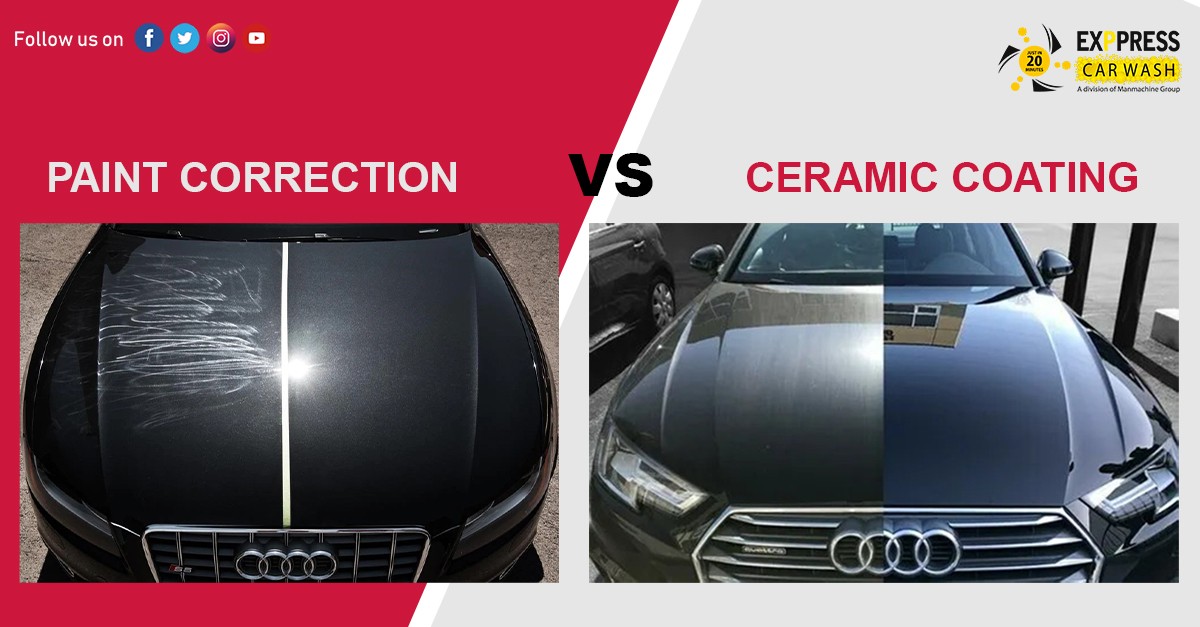The Role of Ceramic Layer in Securing Your Automobile's Paint From Environmental Damages
Ceramic finishing has actually arised as a sophisticated solution for auto owners seeking to maintain the honesty of their automobile's outside. As we explore the nuances of ceramic finish, it comes to be evident that the choice to execute this protective step could dramatically affect your lorry's long life and visual.
What Is Ceramic Coating?
Ceramic finishing is a sophisticated fluid polymer put on the external surface areas of a lorry, designed to supply a durable layer of protection for the paint. This innovative service forms a chemical bond with the car's factory paint, creating a hydrophobic and durable shield. The covering includes nanoparticles that fill out the microscopic flaws in the paint, resulting in a smooth surface that enhances gloss and shine.
Typically, ceramic coatings are available in various formulations, enabling various degrees of security and longevity. While some products can last for several months, others offer protection for numerous years, relying on the thickness of the application and environmental factors. The application process calls for careful preparation, including cleaning, sanitizing, and polishing the lorry's surface area to make sure optimal bond of the covering.

Advantages of Ceramic Finish
One of the main advantages of using a ceramic covering is the phenomenal protection it uses to automobile paint. This innovative finishing forms a durable layer that guards the lorry's surface area from a range of ecological risks, consisting of UV rays, acid rain, bird droppings, and tree sap. By supplying this robust protection, ceramic layers substantially reduce the danger of fading and etching, maintaining the automobile's visual appeal over time.
In enhancement to protection, ceramic coverings are renowned for their hydrophobic homes, which drive away water and dirt, making it much easier to keep a tidy lorry. This self-cleaning result reduces the frequency of cleaning, conserving both time and resources. Additionally, ceramic coatings boost the depth of the paint's gloss, leading to a sleek and vibrant appearance that raises the overall look of the automobile.
An additional notable advantage is the longevity of ceramic layers. Unlike conventional waxes or sealants that require regular reapplication, ceramic coatings can last a number of years, supplying an economical option for cars and truck owners looking for long-lasting protection. On the whole, investing in ceramic covering results in enhanced durability, reduced maintenance, and continual aesthetic charm for automotive paint.
Exactly How Ceramic Finishing Works
A ceramic finishing operates through a chemical bonding process that creates a protective layer on the vehicle's paint surface. This innovative option uses advanced nanotechnology, where microscopic fragments of silica are put on hold in a fluid kind - ceramic coating. Upon application, these particles bond with the manufacturing facility paint, developing a hydrophobic and resilient layer that improves the automobile's surface
The major component of ceramic coverings, silicon dioxide (SiO2), adds to the layer's stamina and resilience. When cured, the covering changes into a difficult, glass-like surface that guards the paint from ecological pollutants such as dust, UV rays, bird droppings, and tree sap. This molecular bond leads to a surface that is not just immune to scratches yet additionally easier to clean up, as dust and grime are less likely to adhere.
In addition, the hydrophobic buildings of ceramic coatings cause water to grain and slide off, minimizing the chances of water spots and mineral down payments. This safety obstacle effectively extends the life of the paint and preserves the vehicle's aesthetic allure, using cars and truck proprietors a durable remedy for paint protection.
Application Process of Ceramic Covering
When taking into consideration the application of ceramic finishing, preparation is key to achieving ideal results. Any kind of scratches or blemishes ought to be attended to at this phase, as the finishing will bond with the surface underneath.

Ceramic coating is after that used in little sections, generally making use of an applicator pad. The vehicle should be left to cure in a regulated setting to permit the covering to fully bond this contact form with the paint.
Long-Term Maintenance and Care
Achieving an effective ceramic layer application sets the structure for long-lasting defense, however appropriate upkeep is important to maintaining its benefits. Routine washing is important; utilizing a pH-neutral vehicle shampoo will certainly help maintain the finish's honesty without triggering damage. Prevent automated car cleans that use unpleasant materials, as they can endanger the layer's surface area.

In addition, applying a ceramic finishing upkeep spray can improve the existing layer, supplying an extra boost in defense and luster. It's a good idea to perform this every three to 6 months, depending on ecological exposure.
Lastly, car park in shaded areas or utilizing automobile covers can prevent prolonged exposure to dangerous UV rays and environmental pollutants, further expanding the life of your ceramic finishing. By sticking to these maintenance techniques, you can guarantee your vehicle's coating remains secured and visually appealing for many years ahead.
Final Thought
In summary, ceramic finishing offers as an important protective action for automotive paint, effectively securing cars from a variety of ecological risks. Its ability to produce a robust hydrophobic barrier not only enhances aesthetic web link allure however likewise substantially minimizes the regularity and intensity of maintenance called for. The resilient nature of this sophisticated polymer highlights its worth in preserving vehicle integrity and appearance, ultimately adding to a more visually attractive and sturdy vehicle finish.
Ceramic finishing is an innovative fluid polymer used to the external surfaces of a lorry, created to provide a sturdy layer of defense for the paint. Ceramic finishes improve the depth of the paint's gloss, resulting in a dynamic and polished look that boosts the total appearance of the automobile.
A ceramic finishing runs through a chemical bonding process that creates a protective layer on the automobile's paint surface.The main component of ceramic coverings, silicon dioxide (SiO2), adds to the finish's stamina and strength.In recap, ceramic coating serves as an essential protective measure for vehicle paint, successfully securing cars from an array of ecological hazards.